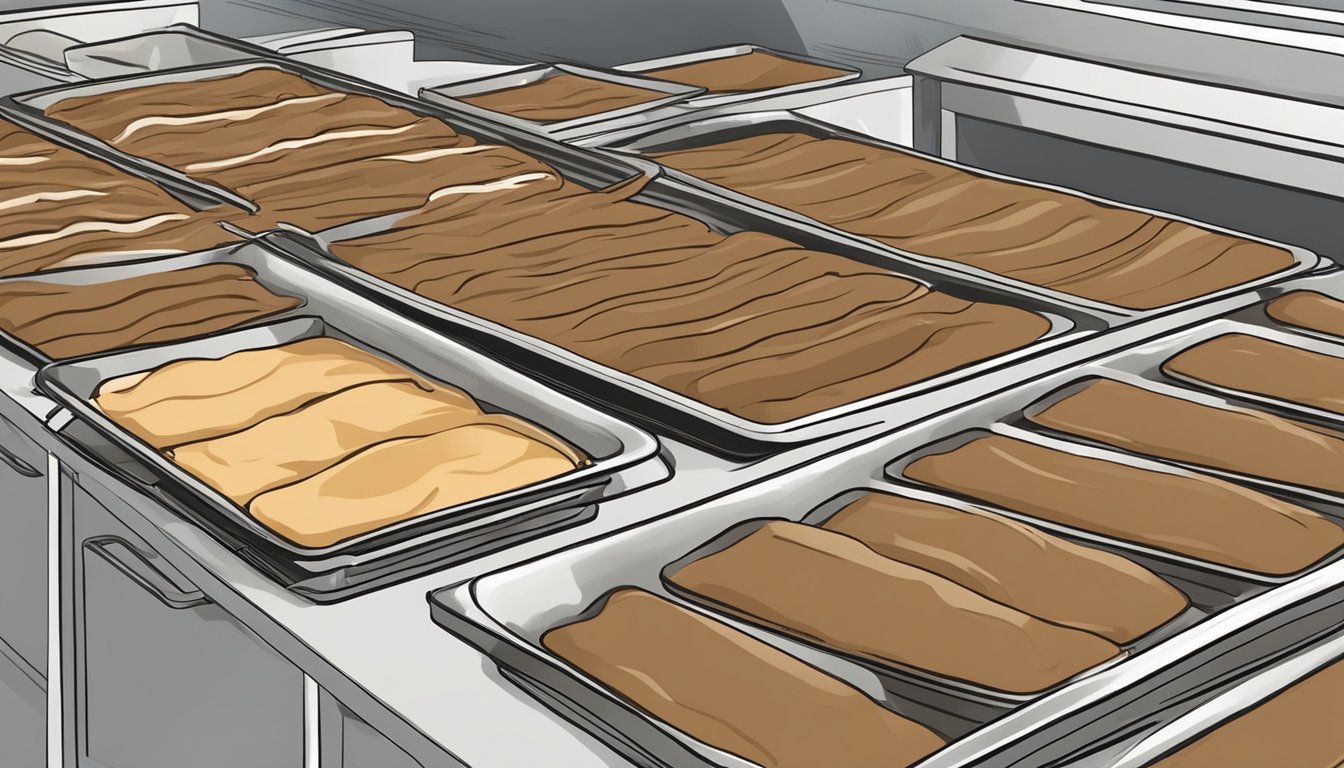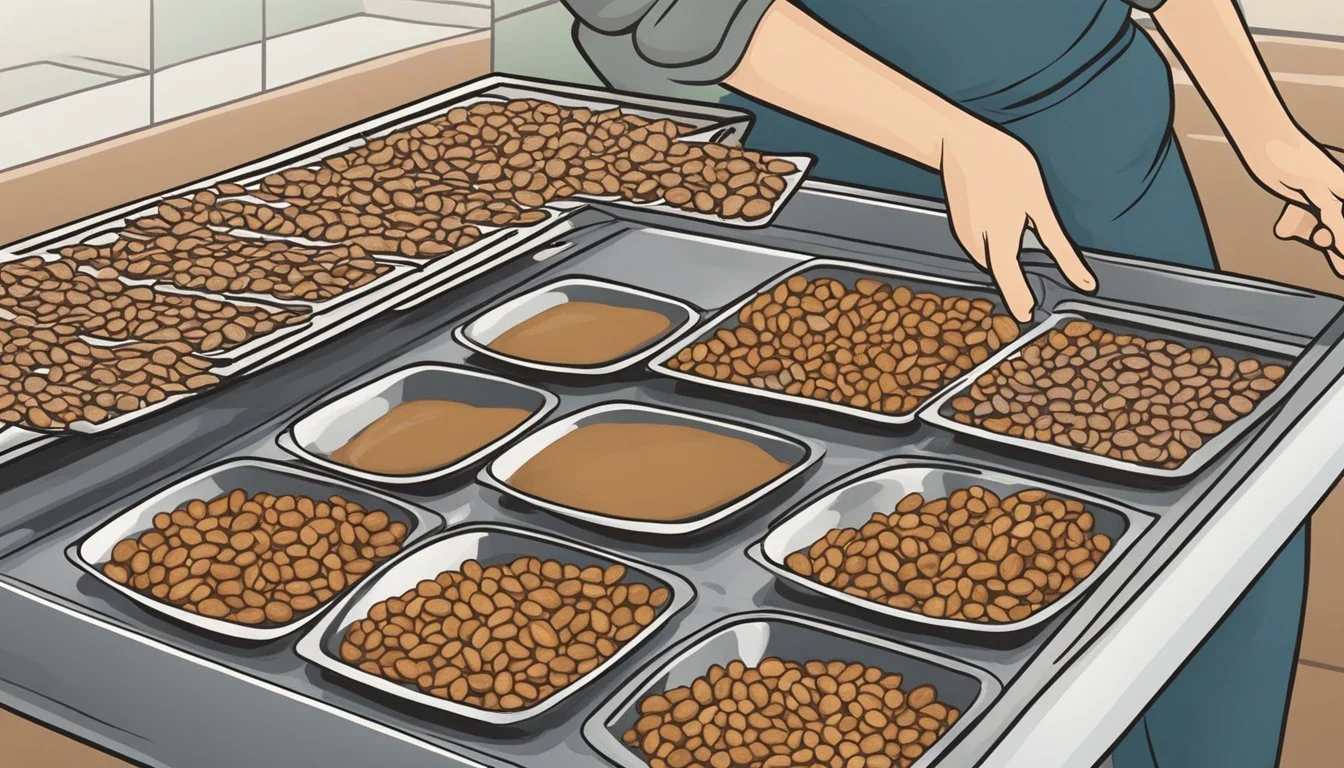How to Dehydrate Refried Beans?
A Step-by-Step Guide
Dehydrating refried beans is an efficient technique for preserving their rich protein content while extending their shelf life. This method does away with the need for refrigeration, making the beans more versatile for long-term storage or for use in outdoor activities such as camping or hiking. Individuals can easily undertake this process at home with the use of a food dehydrator, a device designed to remove moisture from foods at a low and steady temperature.
The process itself is straightforward. Cooked refried beans are spread thinly on dehydrator trays to ensure even moisture removal. The dehydrator's temperature setting is key to maintaining the nutritional value of the beans, and it's important to select a model that allows control over this aspect. Once dried, the beans become shelf-stable, retaining their flavor and nutrients without the risk of spoilage that comes with their hydrated counterparts.
To reconstitute dehydrated refried beans, simply adding water will restore them to their original state, making them a convenient option for quick meal preparation. This method of preservation not only ensures that the nutritional benefits of refried beans are retained, but it also offers an easy way to manage portion sizes and reduce food waste.
Understanding Refried Beans
Refried beans are a staple in Mexican cuisine and traditionally referred to refried black beans (how long do black beans last?) or pinto beans (how long does pinto beans last?). This section explores the fundamentals of beans and their nutritional advantages.
Refried beans stem primarily from pinto beans or black beans. 'Refried' is a bit of a misnomer; it implies that the beans are fried multiple times. However, in Spanish, "refritos" means "well-fried," indicating that the beans are only fried once after being cooked and mashed.
Refried beans are usually seasoned and may include ingredients such as onion, garlic, cumin, and chili powder to enhance flavor.
To preserve refried beans longer, dehydrating is a preferred method. Dehydrating helps eliminate moisture, which is responsible for the growth of bacteria and mold.
The drying process allows for long-term storage without the need for refrigeration, making dehydrated refried beans a convenient and versatile ingredient.
Nutritional Benefits
Refried beans offer numerous nutritional benefits, as they are a source of plant-based protein and dietary fiber. Here is a quick look at their nutritional components:
Protein: Essential for muscle repair and growth, beans provide a good amount of protein, making them an excellent option for vegetarians and vegans seeking alternative protein sources.
Fiber: High in fiber, they support digestive health and can help regulate blood sugar levels.
Nutrients: Refried beans are rich in essential nutrients, including vitamin C, potassium, magnesium, and manganese. These contribute to overall health by supporting various bodily functions.
In a typical serving size, beans can offer the following approximate nutritional values:
Calories: 120-140 kcal
Protein: 8-10 g
Fiber: 5-8 g
Sodium: 400-500 mg
While nutritious, the added sodium can be a concern for those monitoring their salt intake. It's essential to consume them in moderation, particularly if they are commercially prepared as they may contain higher sodium levels. Homemade versions allow for better control over the amount of salt and fat used, catering to individual dietary needs.
Preparation for Dehydration
Dehydrating refried beans is an excellent way to prolong their shelf life and enhance convenience. This section will guide readers through selecting the best beans for dehydrating and the crucial steps to follow before beginning the dehydration process.
Choosing the Right Beans
Selecting suitable beans is crucial for optimal dehydration results. Pinto beans and black beans are the most commonly used for making refried beans and are perfect due to their creamy texture and ability to hold shape.
Canned Beans: They are ready to use, ensuring consistent quality and saving time. No rinsing is required, and they can go directly from the can to the skillet.
Homemade Refried Beans: One can prepare beans from scratch using dried pinto or black beans. They must be cleaned, soaked, cooked, and then mashed with a potato masher for the process.
Pre-Dehydration Process
To dehydrate beans effectively, one must remove as much moisture as possible and achieve the desired consistency; this ensures a long shelf life and prevents spoilage.
Prepare the Beans: If using canned beans, ensure they are fat-free, as fats can go rancid. For homemade refried black beans, use minimal olive oil and avoid animal fats. Season with ground cumin and other desired spices.
Moisture Reduction: The cooked beans (how long do cooked beans last?) should have a thick consistency with minimal moisture to expedite the drying process.
Parchment Paper Preparation: Use parchment paper on dehydrator trays to prevent sticking. Spread the beans thinly to form an even layer, which will ensure even dehydration.
By selecting the correct type of beans and preparing them with attention to moisture content, one can create a dried product that rehydrates well and maintains flavor and texture.
Dehydrating Process
The dehydrating process preserves beans by removing moisture, so they become dry and brittle. This process can be done using a dehydrator or alternative methods such as an oven.
Using a Dehydrator with Dehydrator Trays
To dehydrate beans effectively:
Spread a thin layer of beans on dehydrator trays.
Set the dehydrator to a low temperature, typically between 125-135°F (52-57°C).
Allow the beans to dehydrate for 8-10 hours. Devices like the Cosori Premium are well-suited for such a task.
Alternative Dehydration Methods
If a dehydrator is not available, one can use an oven:
Preheat the oven to the lowest possible temperature.
Spread the beans thinly on a lined baking sheet.
Prop the oven door open slightly to allow moisture to escape and dehydrate for several hours, checking periodically for dryness.
Monitoring Moisture Content
It's crucial to regularly check the beans:
They should be brittle to the touch once fully dehydrated.
The ideal moisture content should be below 10% to ensure a long shelf life and prevent mold growth.
One might use a moisture meter for precise measurement or assess by feel; the beans should not be pliable when completely dry.
Storing Dehydrated Beans
Proper storage is crucial to maintaining the shelf life and quality of dehydrated beans. It prevents spoilage, clumping, and sticking, ensuring that the beans are ready to use when needed.
Airtight Storage Solutions
To store dehydrated beans, one should always use an airtight container or storage bag. Vacpac or airtight containers made of glass, heavy-duty plastic, or metal with sealing lids are suitable choices. For enhanced preservation, one can use a vacuum sealer to remove air from storage bags, which significantly extends the beans' usability.
Manage Shelf Life and Quality
The shelf life of dried beans is greatly influenced by storage conditions. Beans should be kept in a cool, dark place to prevent degradation of quality. Containers must be kept away from moisture and heat sources to avoid spoilage. Properly sealed and stored, beans could last for several months up to a year.
Preventing Clumps and Sticking
Clumps and sticking can be prevented by ensuring beans are completely dry before storing. One may also consider using parchment paper to separate layers of beans, especially if they are stored in bulk. This method aids in the easy removal of portions for use without disturbing the entire content.
Rehydrating and Cooking Tips
When one rehydrates dehydrated beans, the goal is to restore the beans' original texture and maximize their flavor. Careful rehydration paired with thoughtful seasoning can ensure that the beans are not only edible but delicious.
Effective Rehydration Techniques
To rehydrate dehydrated beans, the individual only needs to add water and wait. Pour the hot water over the beans, ensuring they are fully submerged, and allow them to sit until they have absorbed enough liquid and reached a desirable consistency. This process typically takes several hours, and it is often recommended to let the beans soak in boiling water overnight. Alternatively, for a quicker method, they can be simmered gently on the stovetop until rehydrated.
Cold Soak Method:
Place beans in a large bowl.
Cover with cold water.
Soak for 8-10 hours or overnight.
Quick Simmer Method:
Place beans in a pot.
Cover with boiling water.
Simmer for 1-2 hours.
Incorporating Flavor and Spices
Once the beans have rehydrated sufficiently, one may begin to enhance their flavor. At this stage, salt and pepper can be added for basic seasoning.
For more layered flavors, incorporating minced garlic, chopped onion, or other spices such as chili or other peppers can greatly enhance the taste. A dash of lime juice can add brightness and balance to the rich bean flavor.
If the individual prefers a cheesy note, stirring in grated cheese until it melts into the beans will create a creamy texture. Here’s how to effectively season the rehydrated beans:
Seasoning Mix (to taste):
Salt
Black Pepper
Garlic (minced or powdered)
Onion (chopped or powder)
Powdered Spices (e.g., cumin, chili powder)
Lime Juice
Optional: Grated Cheese
Remember, when it comes to spices, they should start with small amounts, mix well, and adjust according to taste.
Uses for Dehydrated Beans
Dehydrated refried beans offer a variety of culinary uses and practical benefits, especially for those seeking portability and longevity in food storage.
Inspiring Recipes and Meal Ideas
Dried beans can be an essential ingredient for a broad spectrum of recipes. They easily rehydrate into a usable form, making them suitable for Mexican food (What wine goes well with Mexican food?) like tacos and bean dip, or as a flavor-rich side dish.
They can also be dried into homemade veg stock powders when dried and pureed alongside other vegetables such as onions and cabbages. These homemade veg stock powders add substance and nutrition to stews and soups in just a few minutes, pairing well with ingredients such as rice and vegetables such as sweet potatoes.
Commercially these wonder beans are featured in many "green powder capsules" and with the right blend of super-veggies, you can make your own green powder capsules from your organic vegi-garden and start developing organic recipes that taste amazing.
Camping Trip Staple
For a hike or camping trip dried beans are the quintessential food item. Their lightweight and compact nature makes them easy to carry, reducing the weight of food supplies on a camping trip.
Moreover, dehydrated beans are shelf-stable, which ensures that they maintain their quality and edibility over an extended period, making them a reliable food source in the great outdoors.
Benefits of Lightweight and Compact Food
Emphasizing preservation and ease of transport, beans are advantageous due to their condensed size and reduced mass.
This attribute not only makes them an ideal choice for emergency food storage but also for any situation that requires efficient packing and minimal weight without sacrificing nutritional value.
The reduced weight and size aspect of dehydrated foods are precious in scenarios where carrying capacity is limited.




